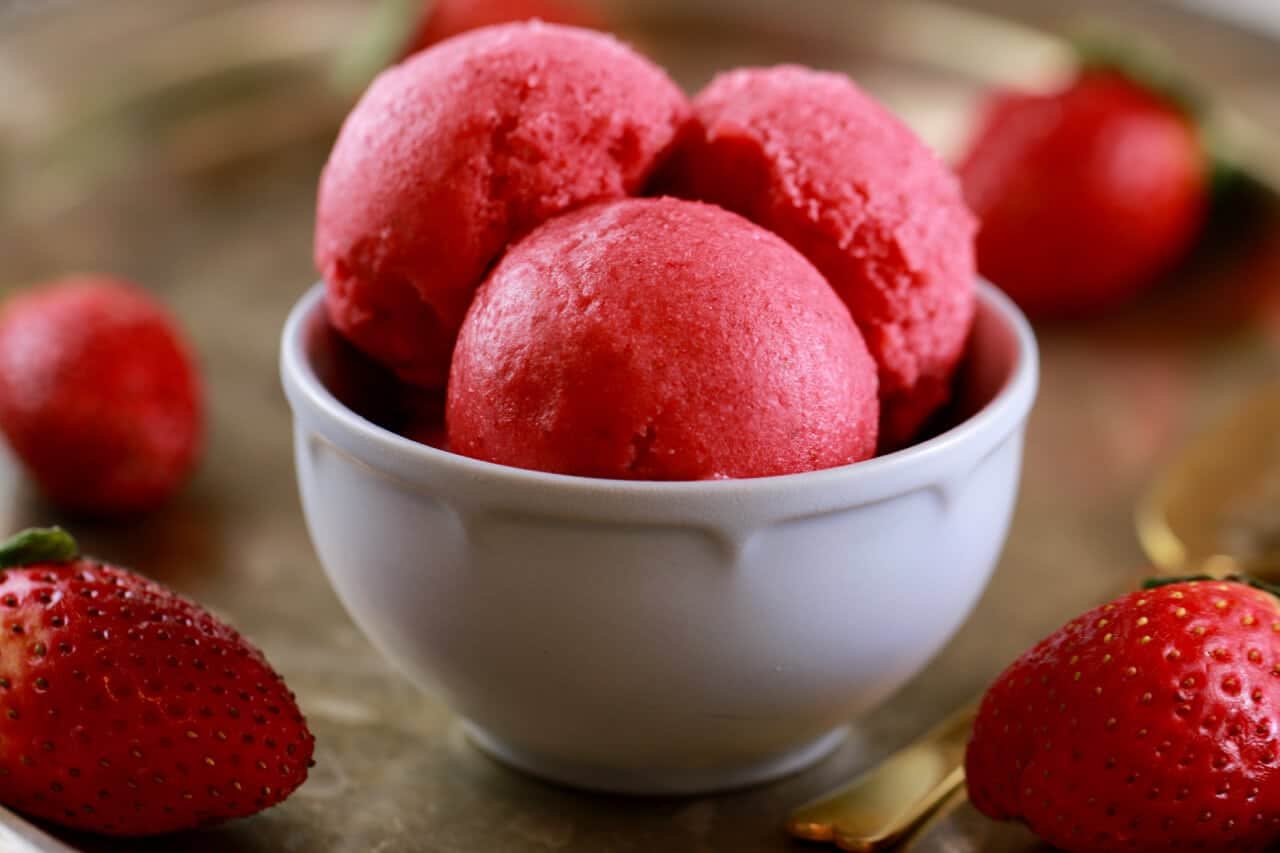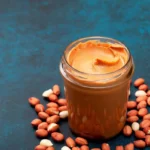
Embark on a journey through the delightful world of frozen yogurt, where the sweet history and evolving trends intertwine to create a frozen treat beloved by millions. From its ancient origins in Mesopotamia to the modern self-serve craze, frozen yogurt has not only captivated taste buds but also carved a unique niche in the dessert landscape. Join us as we explore 25 fascinating trivia points, uncovering the rich history, global impact, and nutritional nuances that make frozen yogurt a timeless and ever-popular indulgence. Whether you’re a seasoned enthusiast or new to the frozen yogurt phenomenon, there’s always something sweet to discover in the realm of frozen delights.
Ancient Origins: The roots of frozen yogurt trace back to ancient civilizations, with evidence suggesting that both Mesopotamia and China enjoyed chilled yogurt blends for centuries. The idea of combining yogurt with a freezing process likely emerged independently in these regions, showcasing the enduring appeal of yogurt-based treats throughout history. This historical context emphasizes that frozen yogurt is not merely a contemporary trend but has deep cultural and culinary ties reaching far back into our collective past.
Modern Birth: The commercial journey of frozen yogurt took a significant step forward in 1971 when McDonald’s introduced the “McFlurry.” This marked the first instance of commercially available frozen yogurt, blending soft-serve ice cream with various toppings using a specially designed machine. McDonald’s innovative approach set the stage for frozen yogurt’s popularity as a customizable and delicious frozen treat, showcasing the potential for creative combinations in the world of frozen desserts.
Healthy Alternative: The 1980s witnessed the surge of frozen yogurt as a perceived healthier alternative to traditional ice cream. With marketing strategies emphasizing lower fat and calorie content, frozen yogurt appealed to health-conscious consumers looking for a satisfying treat without compromising on dietary goals. This shift in perception contributed significantly to the widespread adoption of frozen yogurt and its establishment as a staple in the frozen dessert market.
Self-Serve Boom: The late 1990s and early 2000s saw the advent of the self-serve frozen yogurt model, revolutionizing the way people enjoyed this delightful treat. Customers could now customize their experience by filling their own cups with a variety of flavors and toppings, fostering a sense of personalization and creativity. This innovative approach not only enhanced the consumer experience but also played a pivotal role in revitalizing the popularity of frozen yogurt during this period.
Largest Chain: As of 2023, Yogurtland holds the title of the world’s largest frozen yogurt chain, boasting over 300 locations internationally. The success of Yogurtland reflects the global appeal of frozen yogurt and the preference for a diverse range of flavors and toppings, as customers continue to seek unique and customizable frozen dessert experiences.
First Drive-Thru: In 1990, TCBY (The Country’s Best Yogurt) introduced the concept of a drive-thru frozen yogurt store in Little Rock, Arkansas. This pioneering move brought convenience to frozen yogurt enthusiasts, allowing them to enjoy their favorite treats without leaving the comfort of their vehicles. TCBY’s drive-thru concept exemplified the industry’s adaptability and commitment to making frozen yogurt accessible in various settings.
Most Flavors: The frozen yogurt landscape reached new heights with Yogurtland in Las Vegas, holding the record for offering the most flavors at a single store, boasting over 100 options at any given time. This achievement underscores the creativity and innovation within the industry, providing customers with an extensive array of choices that cater to diverse palates and preferences.
Longest Line: In 2010, Los Angeles, California witnessed a frozen yogurt milestone as Pinkberry set a Guinness World Record for the longest line, with over 1,600 people eagerly waiting for the grand opening. This event showcased not only the popularity of frozen yogurt but also the cultural significance it holds, bringing communities together in celebration of a shared love for this frozen delight.
World’s Largest Frozen Yogurt Cake: In 2016, Manila, Philippines entered the records with the creation of the world’s largest frozen yogurt cake, weighing an impressive 1,100 kilograms (2,425 pounds). This colossal dessert not only highlighted the creative possibilities with frozen yogurt but also demonstrated its global reach, as enthusiasts around the world continually push the boundaries of frozen dessert craftsmanship.
Nutritional Content: Understanding the nutritional aspects of frozen yogurt is key to informed consumption. A typical 6-ounce serving of frozen yogurt can contain approximately 150-250 calories, 20-30 grams of carbohydrates, and 4-8 grams of protein. These values vary depending on factors such as the specific flavor and toppings chosen. Being mindful of these nutritional details allows consumers to enjoy frozen yogurt as a delightful treat while aligning with their dietary preferences and health goals.
Global Market: The frozen yogurt industry experienced substantial growth, with the global market reaching a valuation of approximately USD 2.3 billion in 2021. According to Grand View Research, this figure is projected to further increase, reaching USD 3.2 billion by 2028. The expanding market underscores the widespread appeal of frozen yogurt on a global scale, reflecting its status as a beloved frozen treat with a diverse consumer base.
US Popularity: The United States stands as the largest market for frozen yogurt, contributing to over 50% of global sales. This dominance highlights the cultural significance of frozen yogurt in American dessert preferences and consumption habits. The popularity of frozen yogurt in the U.S. has played a pivotal role in shaping industry trends and innovations, influencing the global perception of this delightful frozen treat.
Shifting Trends: Despite its enduring popularity, the frozen yogurt market has experienced a decline in recent years, with consumers shifting towards alternative frozen treats like rolled ice cream and smoothie bowls. This change in consumer preferences emphasizes the dynamic nature of the dessert industry and the need for continuous innovation to meet evolving tastes and preferences.
Protein-Packed Options: With the rise of high-protein diets, frozen yogurt has adapted to cater to health-conscious consumers by offering protein-packed options. Some varieties now exceed 20 grams of protein per serving, appealing to individuals seeking a balance between indulgence and nutritional value in their frozen dessert choices.
Non-Dairy Alternatives: Responding to the growing demand for plant-based options, the frozen yogurt landscape has witnessed the widespread availability of non-dairy alternatives. These alternatives, often made with ingredients like almond milk, soy milk, and coconut milk, cater to individuals with lactose intolerance or those embracing a vegan lifestyle, expanding the accessibility of frozen yogurt to a broader audience.
International Variations: Frozen yogurt’s popularity extends across the globe, with regional preferences influencing variations in flavors, textures, and ingredients. In Asia, flavors like red bean and green tea are particularly favored, reflecting local tastes. In Europe, there is a preference for tart and tangy varieties, showcasing the adaptability of frozen yogurt to suit diverse cultural palates.
National Frozen Yogurt Day: Recognized on July 16th, National Frozen Yogurt Day is a celebration of this beloved frozen treat in the United States. This day serves as an opportunity for enthusiasts and businesses alike to indulge in frozen yogurt and engage in promotions and events that honor its place in the dessert world.
Low-Fat vs. Non-Fat: While often marketed as a healthier alternative, the health benefits of frozen yogurt can vary based on sugar and fat content. Low-fat options may still be high in sugar, while non-fat varieties may compensate with added sugars and artificial sweeteners. Consumers are encouraged to be mindful of nutritional labels and choose options that align with their health and wellness goals.
Calories Can Add Up: Toppings play a crucial role in shaping the nutritional profile of a frozen yogurt treat. Adding items like candy pieces, granola, and syrups can significantly increase the calorie and sugar content. This trivia emphasizes the importance of moderation and conscious choices when customizing frozen yogurt servings to maintain a balanced approach to dessert enjoyment.
Probiotics: Some frozen yogurt varieties boast the inclusion of live and active cultures, commonly referred to as probiotics. These beneficial bacteria contribute to gut health and can be advantageous for digestive well-being. Labels mentioning “live and active cultures” or specifying particular probiotic strains indicate a potential health benefit in addition to the sweet indulgence of frozen yogurt. This nutritional aspect adds an extra layer of appeal for those seeking a treat with potential health advantages.
Frozen Yogurt vs. Ice Cream: Drawing a comparison between frozen yogurt and ice cream reveals key distinctions in nutritional content and flavor profiles. While frozen yogurt generally contains lower fat, it may have similar sugar content to ice cream. Additionally, the presence of yogurt cultures imparts a slightly tart taste to frozen yogurt. This trivia showcases the versatility of frozen yogurt, offering a delightful alternative to traditional ice cream with a unique flavor profile that appeals to a broad spectrum of taste preferences.
Portion Control: Maintaining portion control is emphasized as a crucial aspect of enjoying frozen yogurt as part of a balanced diet. Given the customizable nature of self-serve frozen yogurt establishments, consumers are encouraged to opt for smaller serving sizes and exercise moderation, especially when indulging in high-calorie toppings. This trivia promotes a mindful approach to dessert consumption, allowing individuals to savor the sweetness of frozen yogurt while aligning with their health and wellness objectives. The importance of portion control underscores a balanced lifestyle and responsible enjoyment of frozen yogurt as a delightful treat.
Frequently Asked Questions:
Question 1: Can you just freeze yogurt to make frozen yogurt?
Answer: While freezing plain yogurt will technically solidify it, the result won’t be exactly the same as commercially produced frozen yogurt. Here’s why:
Texture: Freezing yogurt on its own can lead to a icy and grainy texture, unlike the smooth and creamy consistency of frozen yogurt.
Sweetness: Most commercial frozen yogurt contains added sugar or sweeteners to balance the tartness of yogurt and create a more palatable flavor profile. Simply freezing plain yogurt will likely result in a very tart and sour taste.
Live Cultures: While some commercially produced frozen yogurt boasts live and active cultures, freezing yogurt at home can significantly reduce the number of these beneficial bacteria.
Therefore, while freezing yogurt is possible, it may not be the best way to replicate the taste and texture of store-bought frozen yogurt.
Question 2: Is frozen yogurt healthier than ice cream?
Answer: Regarding the health comparison:
Frozen Yogurt: Generally lower fat content than ice cream but may contain similar or even higher amounts of sugar depending on the brand and flavor.
Ice Cream: Typically higher fat content but may have less sugar than some frozen yogurt options.
It’s crucial to check the labels and choose products that align with your dietary needs and preferences. Both can be enjoyed in moderation as part of a balanced diet.
Question 3: What’s frozen yogurt made of?
Answer: Frozen Yogurt: Typically made with yogurt, sugar/sweeteners, milk, cream, and flavorings. Some may contain additional ingredients like stabilizers and thickeners.
Question 4: What’s the difference between yogurt and frozen yogurt?
Answer: The key difference lies in the inclusion of live and active cultures:
Yogurt: Contains live and active cultures.
Frozen Yogurt: May or may not contain live and active cultures depending on the product. Look for labels mentioning “live and active cultures” to ensure their presence.








